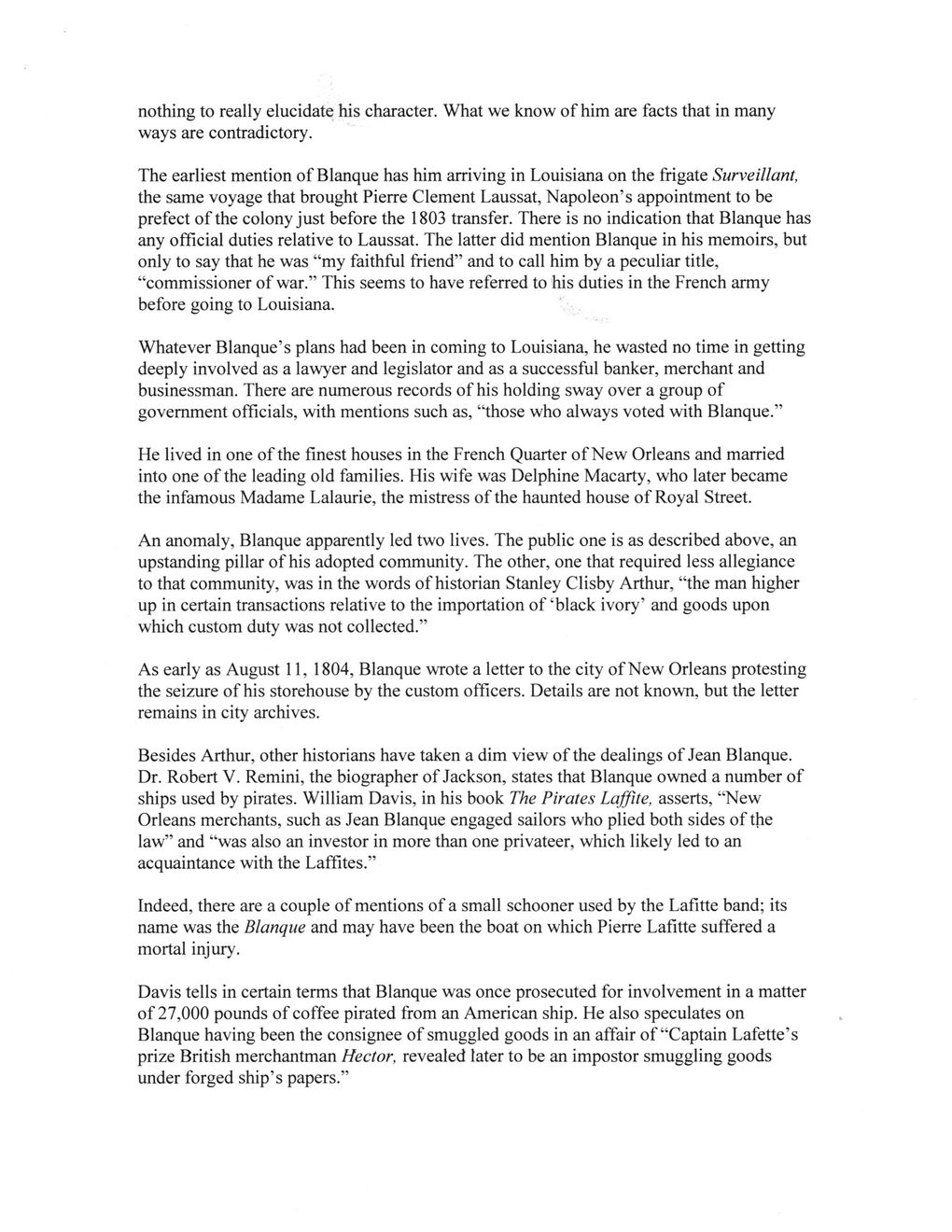This text was obtained via automated optical character recognition.
It has not been edited and may therefore contain several errors.
nothing to really elucidate his character. What we know of him are facts that in many ways are contradictory. The earliest mention of Blanque has him arriving in Louisiana on the frigate Surveillant, the same voyage that brought Pierre Clement Laussat, Napoleon’s appointment to be prefect of the colony just before the 1803 transfer. There is no indication that Blanque has any official duties relative to Laussat. The latter did mention Blanque in his memoirs, but only to say that he was “my faithful friend” and to call him by a peculiar title, “commissioner of war.” This seems to have referred to his duties in the French army before going to Louisiana. Whatever Blanque’s plans had been in coming to Louisiana, he wasted no time in getting deeply involved as a lawyer and legislator and as a successful banker, merchant and businessman. There are numerous records of his holding sway over a group of government officials, with mentions such as, “those who always voted with Blanque.” He lived in one of the finest houses in the French Quarter of New Orleans and married into one of the leading old families. His wife was Delphine Macarty, who later became the infamous Madame Lalaurie, the mistress of the haunted house of Royal Street. An anomaly, Blanque apparently led two lives. The public one is as described above, an upstanding pillar of his adopted community. The other, one that required less allegiance to that community, was in the words of historian Stanley Clisby Arthur, “the man higher up in certain transactions relative to the importation of ‘black ivory’ and goods upon which custom duty was not collected.” As early as August 11, 1804, Blanque wrote a letter to the city of New Orleans protesting the seizure of his storehouse by the custom officers. Details are not known, but the letter remains in city archives. Besides Arthur, other historians have taken a dim view of the dealings of Jean Blanque. Dr. Robert V. Remini, the biographer of Jackson, states that Blanque owned a number of ships used by pirates. William Davis, in his book The Pirates Laffite, asserts, “New Orleans merchants, such as Jean Blanque engaged sailors who plied both sides of the law” and “was also an investor in more than one privateer, which likely led to an acquaintance with the Laffites.” Indeed, there are a couple of mentions of a small schooner used by the Lafitte band; its name was the Blanque and may have been the boat on which Pierre Lafitte suffered a mortal injury. Davis tells in certain terms that Blanque was once prosecuted for involvement in a matter of 27,000 pounds of coffee pirated from an American ship. He also speculates on Blanque having been the consignee of smuggled goods in an affair of “Captain Lafette’s prize British merchantman Hector, revealed later to be an impostor smuggling goods under forged ship’s papers.”

Pirate House Document (068)